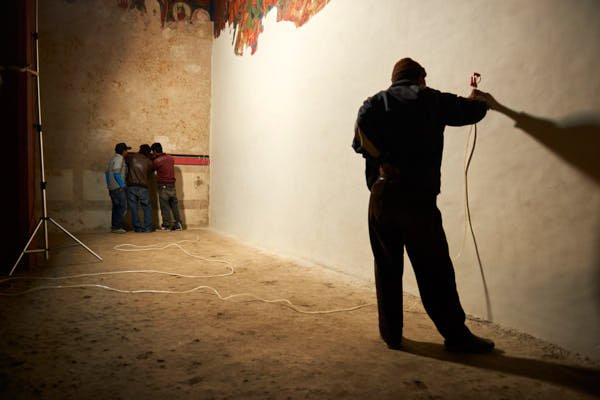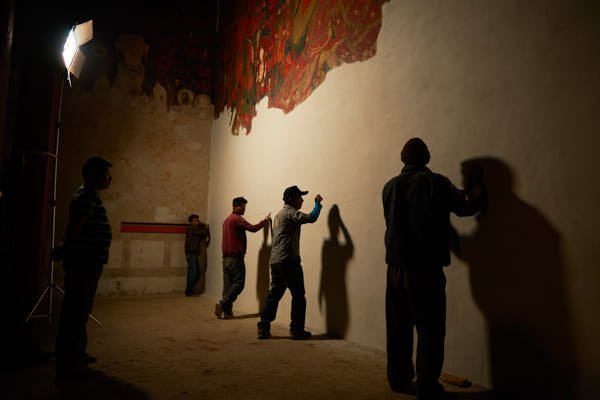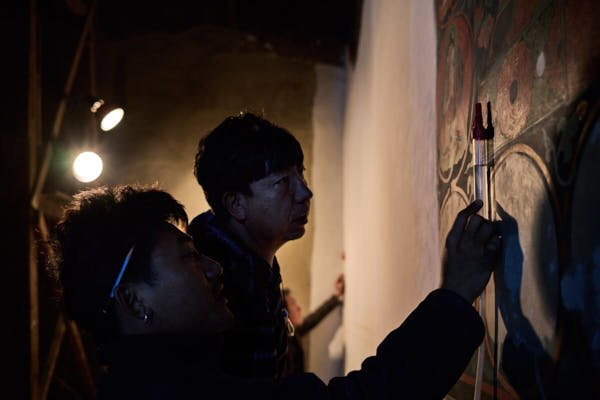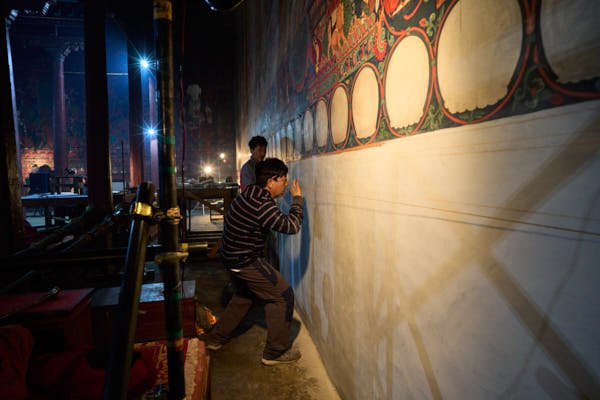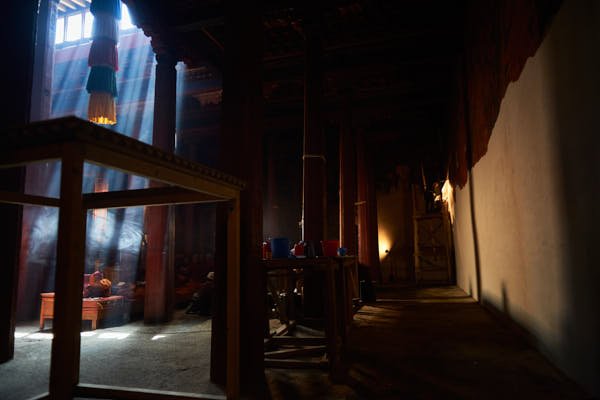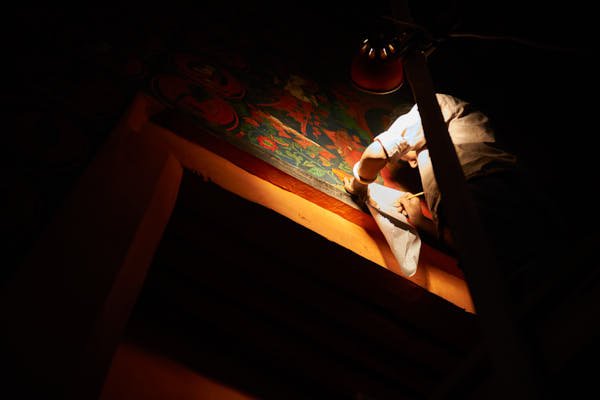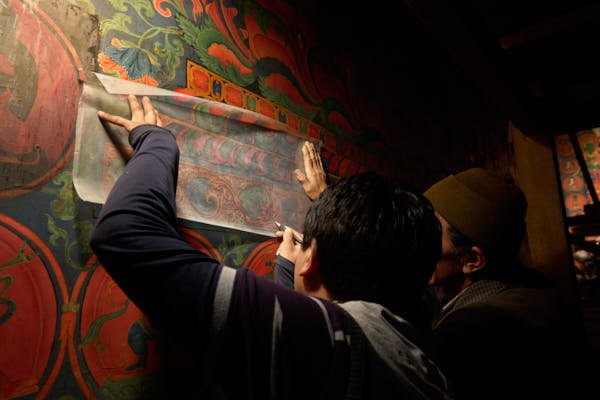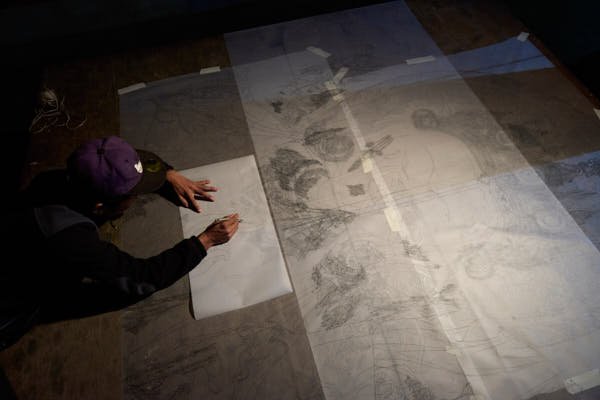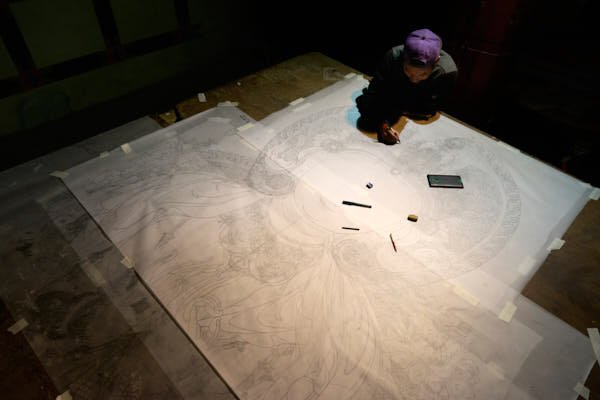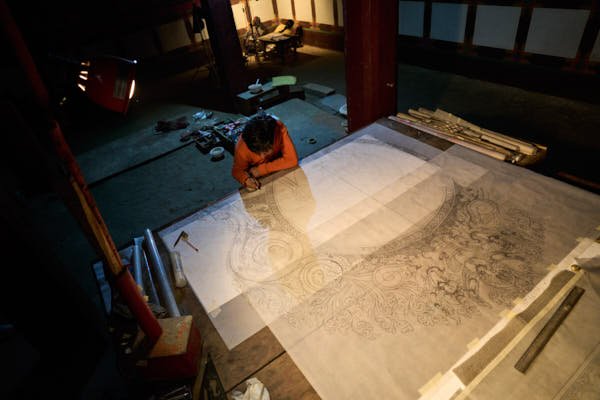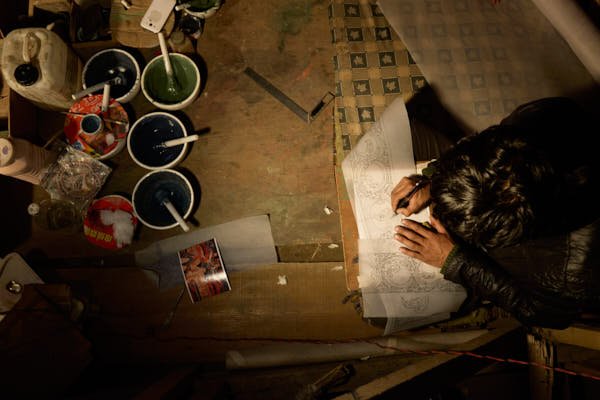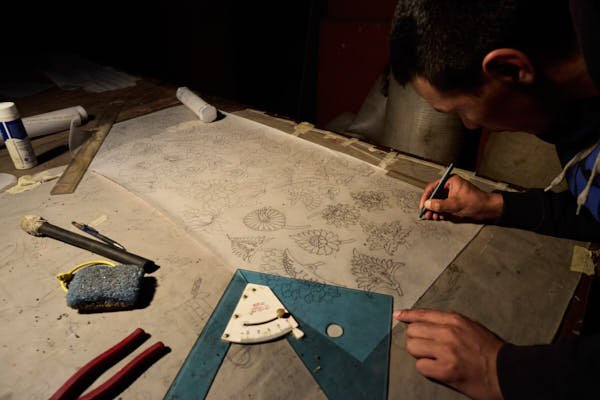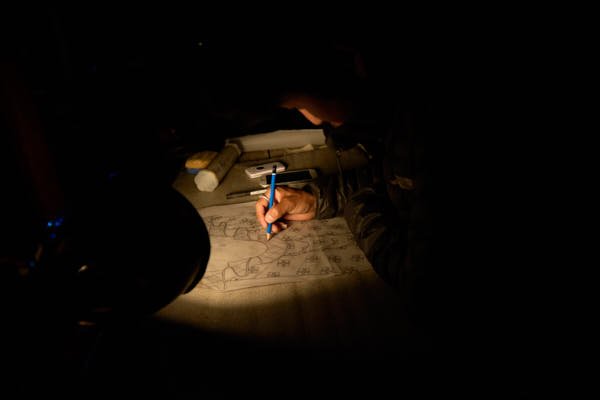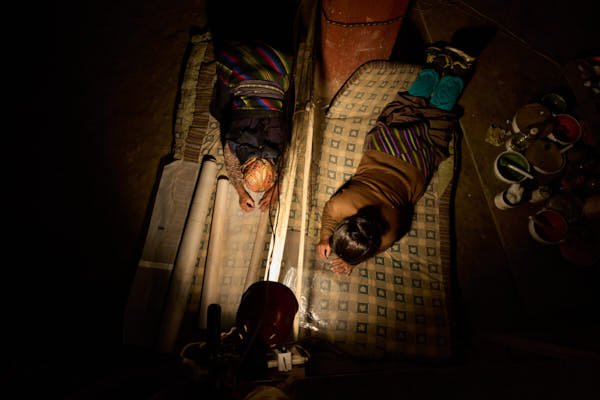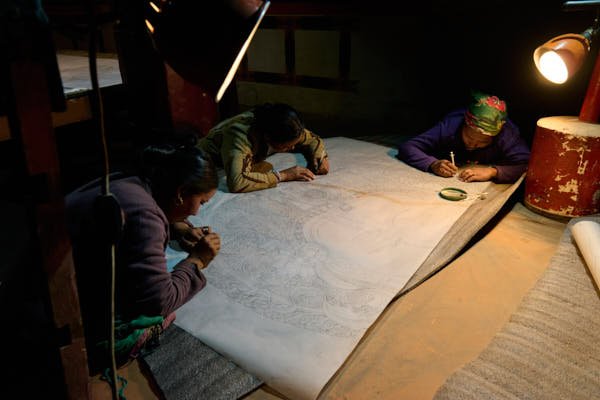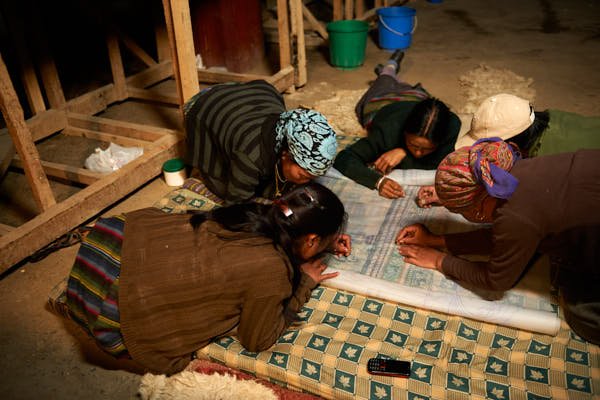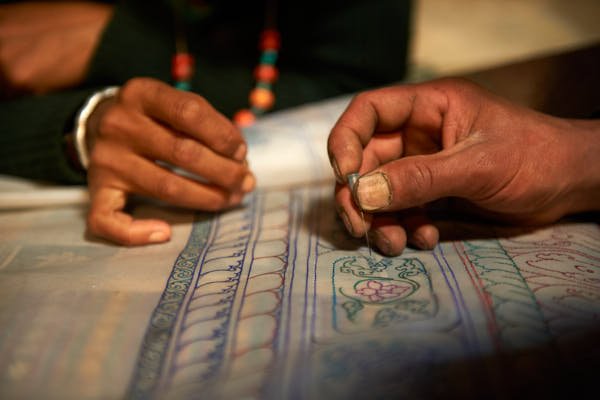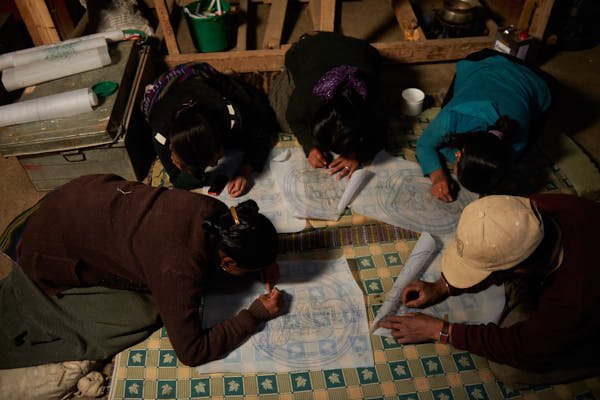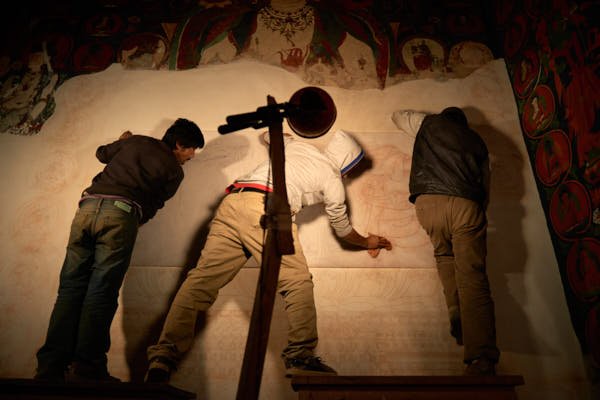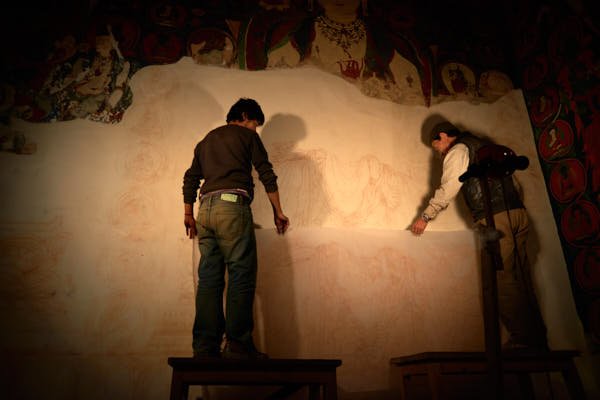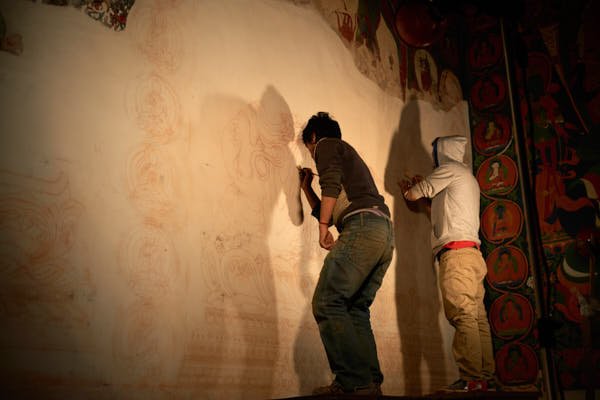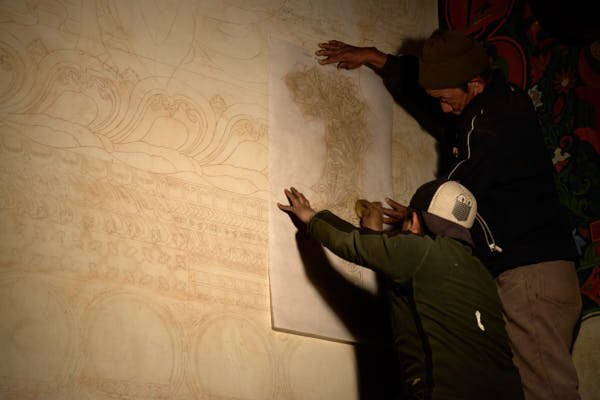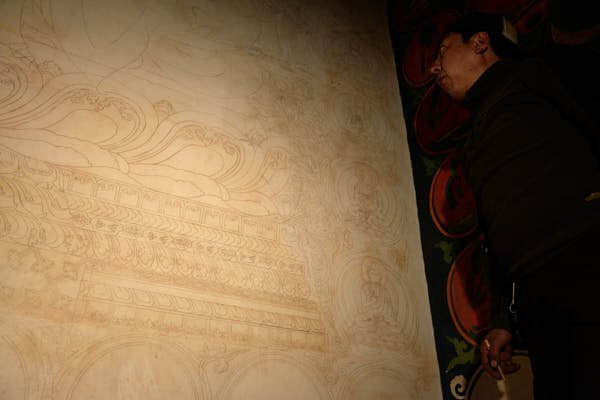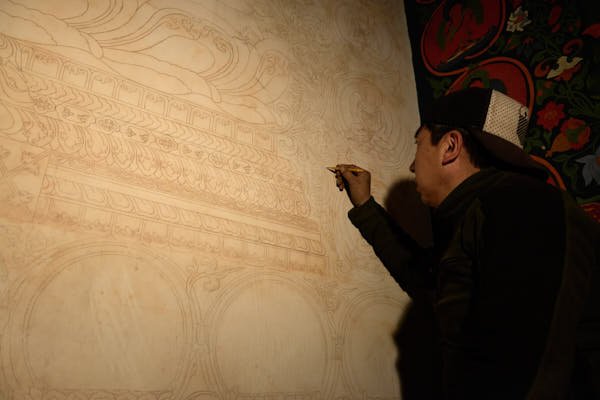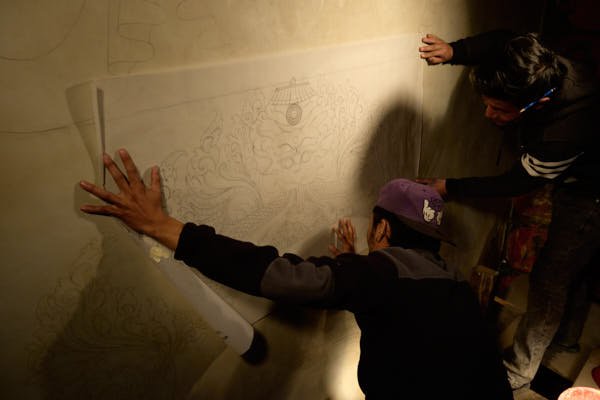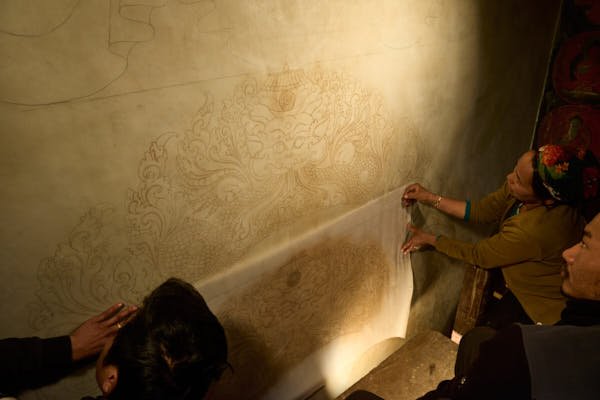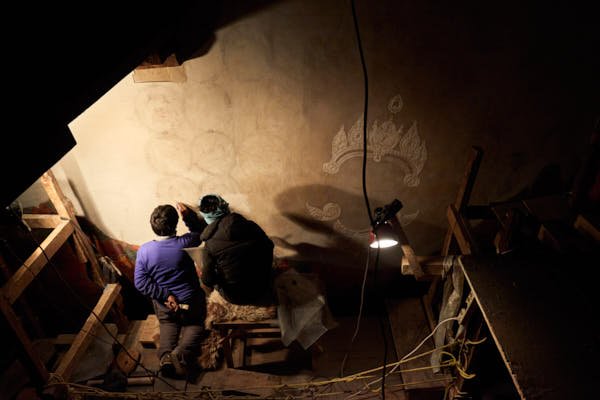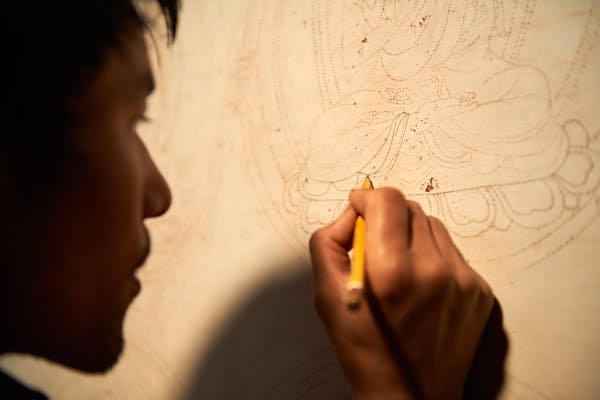The whole drawing plan was based on a “copy and paste” procedure. Once identified what was missing and where to copy it from, life-size drawings were carried out using drafting paper. Patterns, figures and embellishments were copied from different areas of the same wall or from paintings coming from monasteries/temples of the same period and the same sect to avoid repetitions. The photos of elements and decorations coming from different Sakya temples were then scaled up or down using Adobe software and subsequently printed out on paper so as to fit the dimensions needed. In this way it was possible to create new designs based on original motifs.
The preparatory drawing was then carried out on drafting paper, a measured section at a time, so as to keep it thoroughly in scale with the dimensions of the wall paintings present in the monastery. The drafting paper was pierced afterwards following the outlines of the drawing. The piercing would allow transferring straightforwardly the drawing to the surface of the plaster by pouncing powder pigment wrapped in a gauze tissue. The final drawing was then obtained by outlining the dots left by the pouncing with pencils, following an old technique known as "spolvero", used either in Europe and Asia.

